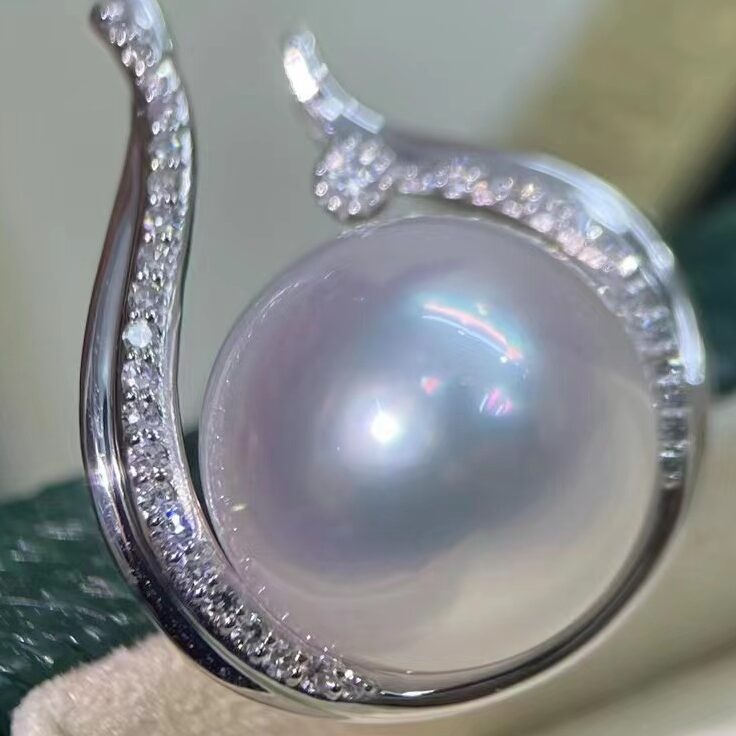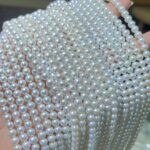
03 Nov How to distinguish freshwater pearls from seawater pearls, natural and artificial?
The pearl is round and crystal clear, and the soft light is shining. The combination of exquisite quality and fashionable design connects every surprise and touching moment, making love always as pure and romantic as the first sight. Do you know the difference between freshwater pearls and seawater pearls?

Seawater pearls and freshwater pearls are not the standard for distinguishing between natural and artificial pearls, but rather the source of pearls. Natural pearls and cultured pearls can be subdivided into seawater pearls and freshwater pearls.

Seawater pearls are formed in oysters that live in the ocean and are typically captured in Indonesia, the Philippines, Australia, China, Japan, French Polynesia, and the South Pacific Islands. Seawater pearl oysters can be grown on volcanic atolls and protected lagoons.
This type of pearl requires a longer growth cycle, but their glossiness is better, which means their quality is higher than freshwater pearls. Disadvantages of seawater pearls: The outer layer of pearls is thinner and less durable than freshwater pearls; The cultivation cycle of seawater pearls is long and the cost is high, therefore the price is relatively high.
Freshwater pearls are formed in various freshwater mussels that live in lakes, rivers, ponds, and other sources of freshwater. They are usually produced in China, Japan, Australia, India, and the United States.
This type of pearl is more affordable and has a shorter formation cycle, but they are not as round as seawater pearls, and their glossiness is not as good as seawater pearls, indicating more defects.

No Comments